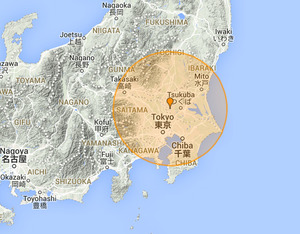ELSI Blog
79 The Inevitable First Earthquake
The Earth-Life Science Institute is a young, fast growing and evolving research institute. One of the most important beats of its daily life, a tradition already, are the semi-weekly lunch talks. As in other universities and research centers around the world, these short talks are an opportunity to present one's recent results, current ideas or future projects in an informal and open format. However, ESLI's lunch talks are special for very important reasons. First, no PB&J sandwiches in brown paper bags, no Parisien baguette. You eat a bento box. Second, you get to hear about a vast array of scientific concepts, from the formation of lipid micelles, to the secrets of Earth's deep mantle to some cool new geochemical technique (and more) as such is the width of ELSI's research interests, all converging at getting a better understanding of the co-evolution of Earth and Life.
And if the bento box in front of me was not enough, something happened that day which reminded me that I was in Japan: an earthquake.
I had been in Japan for a full two weeks, and yet, I had not felt the ground shake any more than from trains arriving at Shinagawa station. "Already two weeks and nothing, is this all you have Japan?" I thought (incorrectly, I should have thought: is this all you have, subducting Pacific and Philippine plates?). Of course earthquakes are no joking matter. Japan's land was in part pulled away from the Eurasian continent by the fall of subducting plates and the tectonic processes that are still shaping Japan today are threatening it with earthquakes and volcanic eruptions. As we all know, these can sometimes have devastating results (see the recent events at Mt Ontake).
As a newcomer to Japan, I was anxious to feel my first earthquake, the unknown feels often scarier than the experienced. And as Kuruma-san was telling us about phospholipid bilayers, it happened. First a jolt, made us pause. A few more jolts confirmed it, someone in the room said "jishin" (Earthquake). Within a few seconds, the rolling started. The building swayed, in near silence, except for a few metallic noises, mostly from shaking light fixtures. I gauged the faces of Japanese colleagues around me to see if I should be worried. Most of them were stern, but not really worried, rather unfazed. I later heard that one jumped under the desk, which is what you should always do during an earthquake. Another Japanese voice said "ooki" and "nagai" (it's big, it's long). It was certainly strong and long enough to know it could only be an earthquake. Yet, perhaps because of the sturdy ELSI building, it never felt as it was that big. This was confirmed when in minutes, we learned this earthquake was a M5.6 intensity (Richter), with an epicentre just north of Tokyo. A significant earthquake, but not a really dangerous one by Japanese standards.
Later on, and since this is ELSI, some of us talk about our experience and how it relates to geology. The first jolt was the P waves, the second jolt from the S waves was hard to distinguish, the rolling was the surface waves. The time difference between them grows with the distance form epicenter. For this earthquake about 60km away from us, I felt about 5 seconds difference in between the P and surface waves, which may be very different from the actual time difference. I learned that with a proximal earthquake like this one, the strongest shaking should be felt quickly, whereas if the earthquake is more distal, the intensity of the ground movements may ramp up for a longer time. With some practice, it seems, one may be able to quickly estimate if things are likely to get worse or not as the earthquake is happening.
In the few hours after the earthquake, I became more comfortable with the idea that I will experience more of them. With a renewed trust in the strength of the ELSI building (which I decided to apply also to my living quarters) and with a bit more knowledge about the "human experience" side of earthquakes, this invisible monster seemed to not look so scary after all. Of course a much much bigger earthquake may happen at any time, but as for the regular M4-M6 earthquakes that happen almost daily in Japan (17 in the month since this one), I'm not too worried. As you can see, you can always expect to learn something from ELSI lunch talks!











